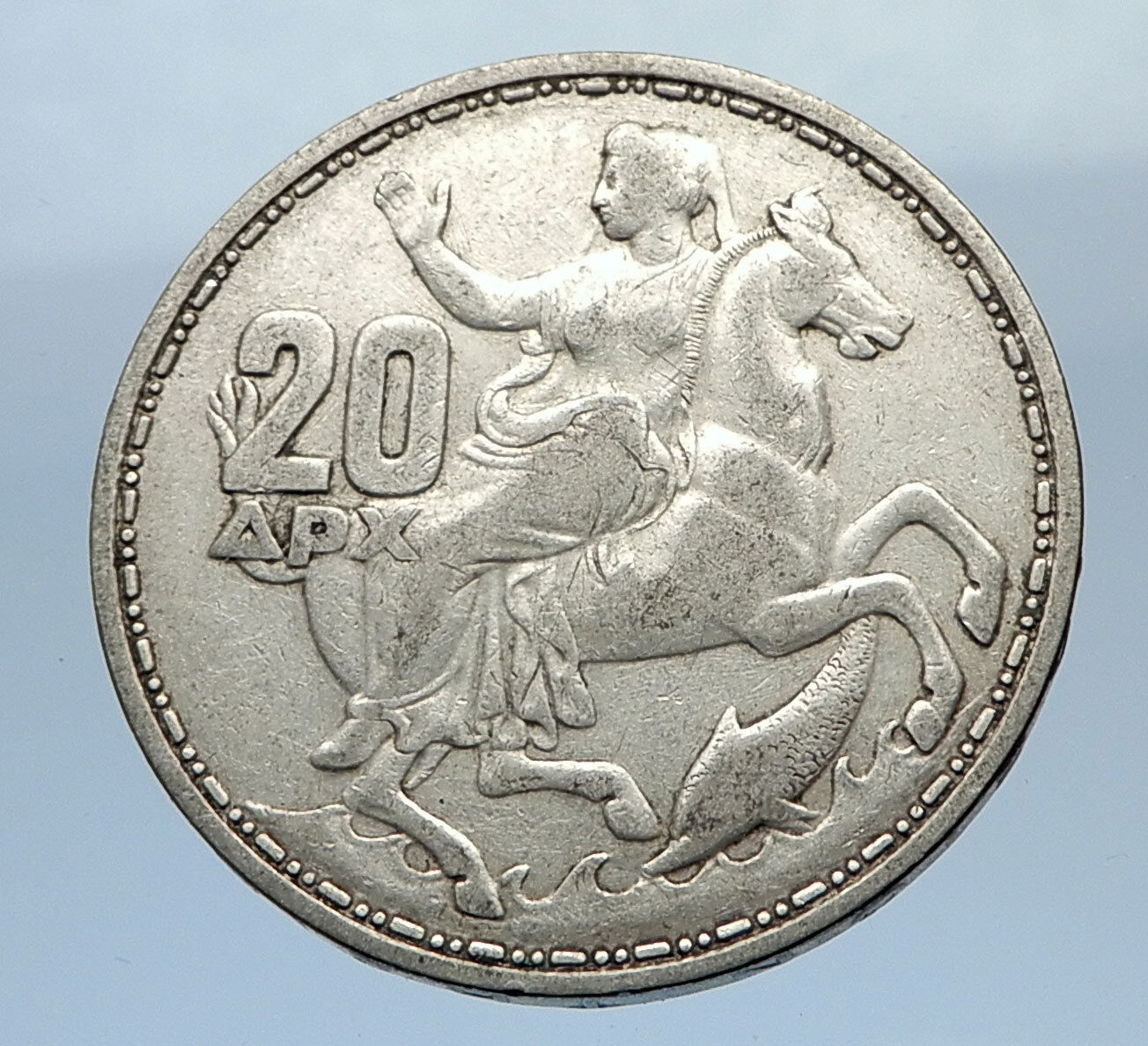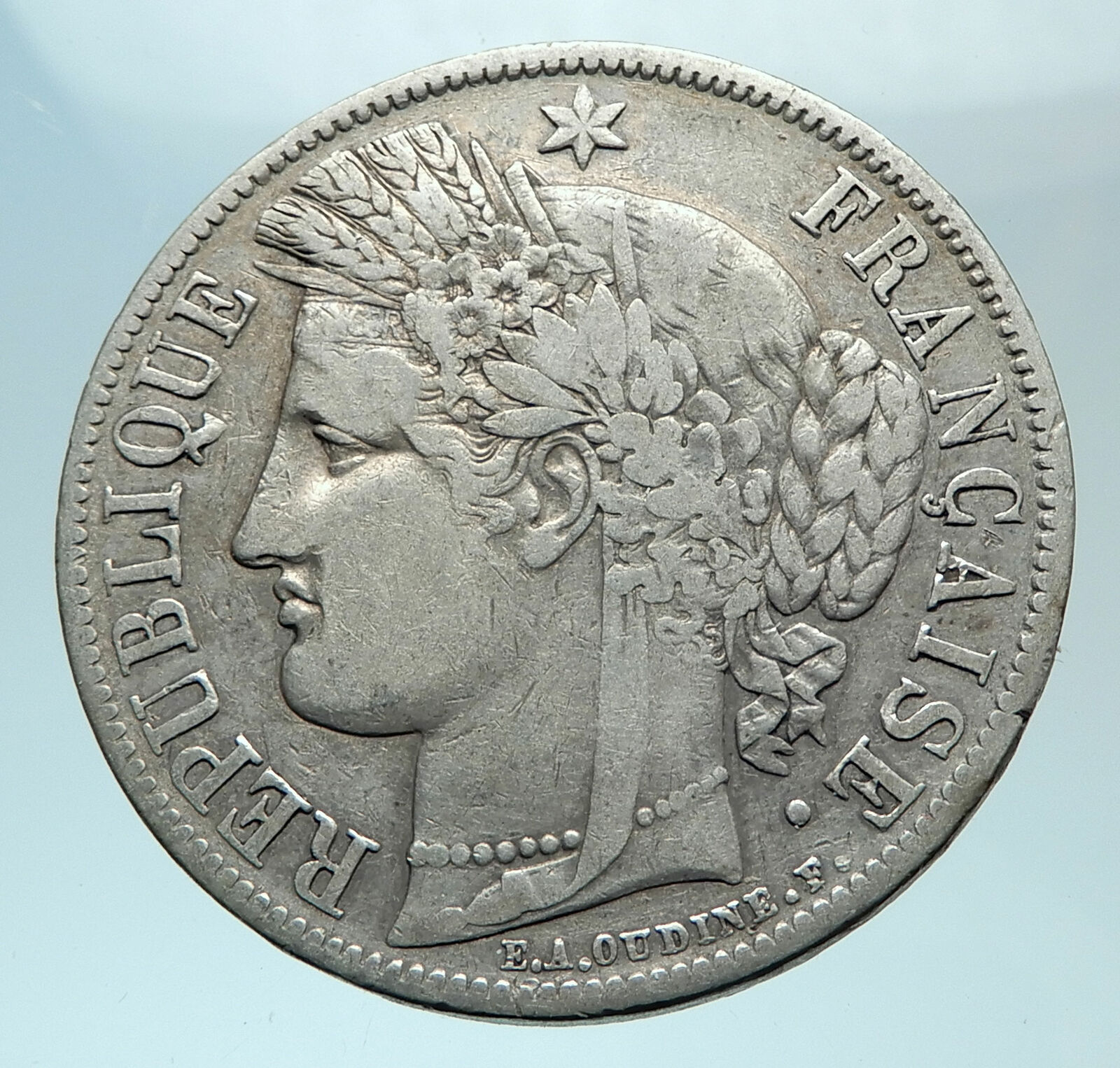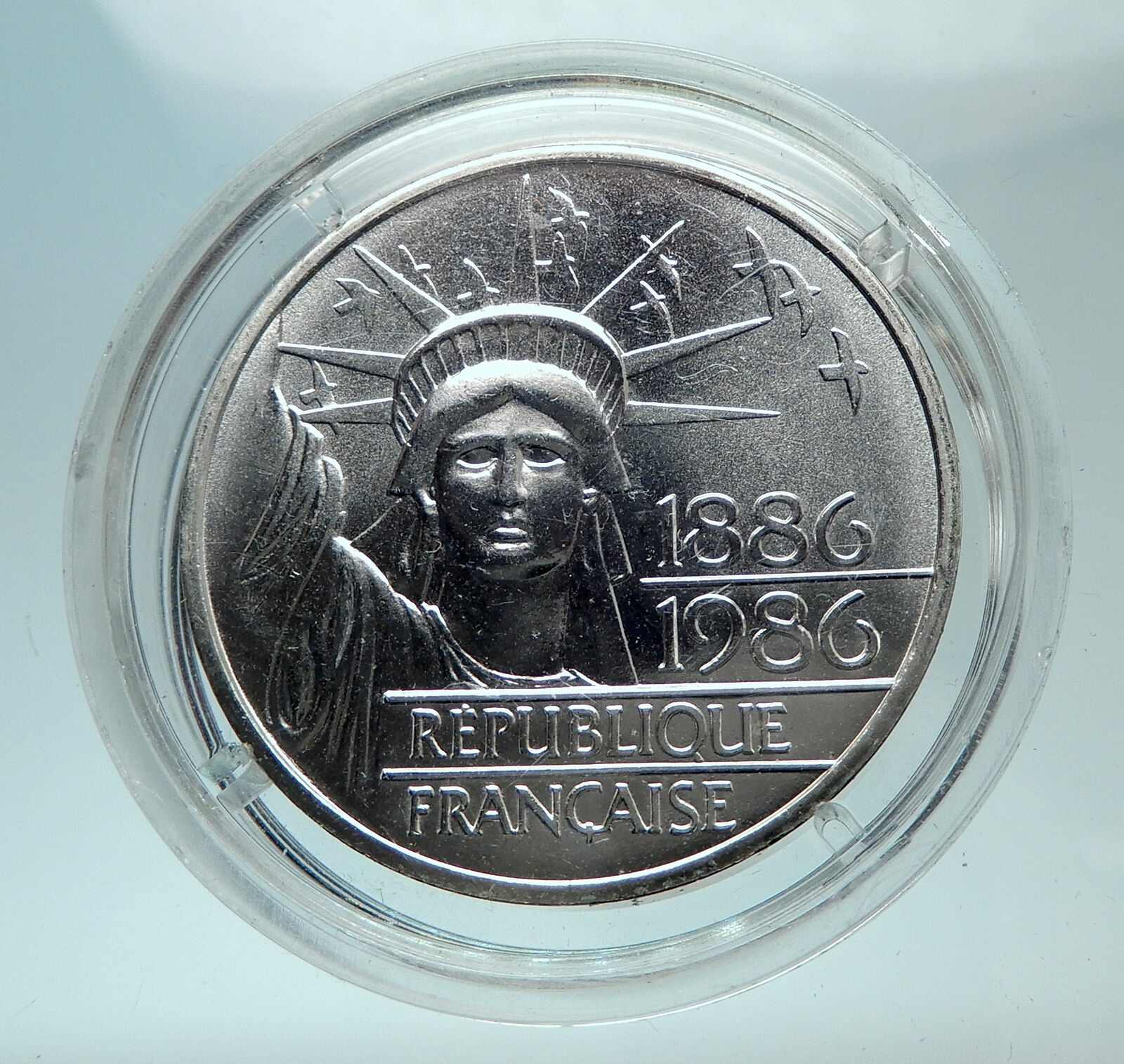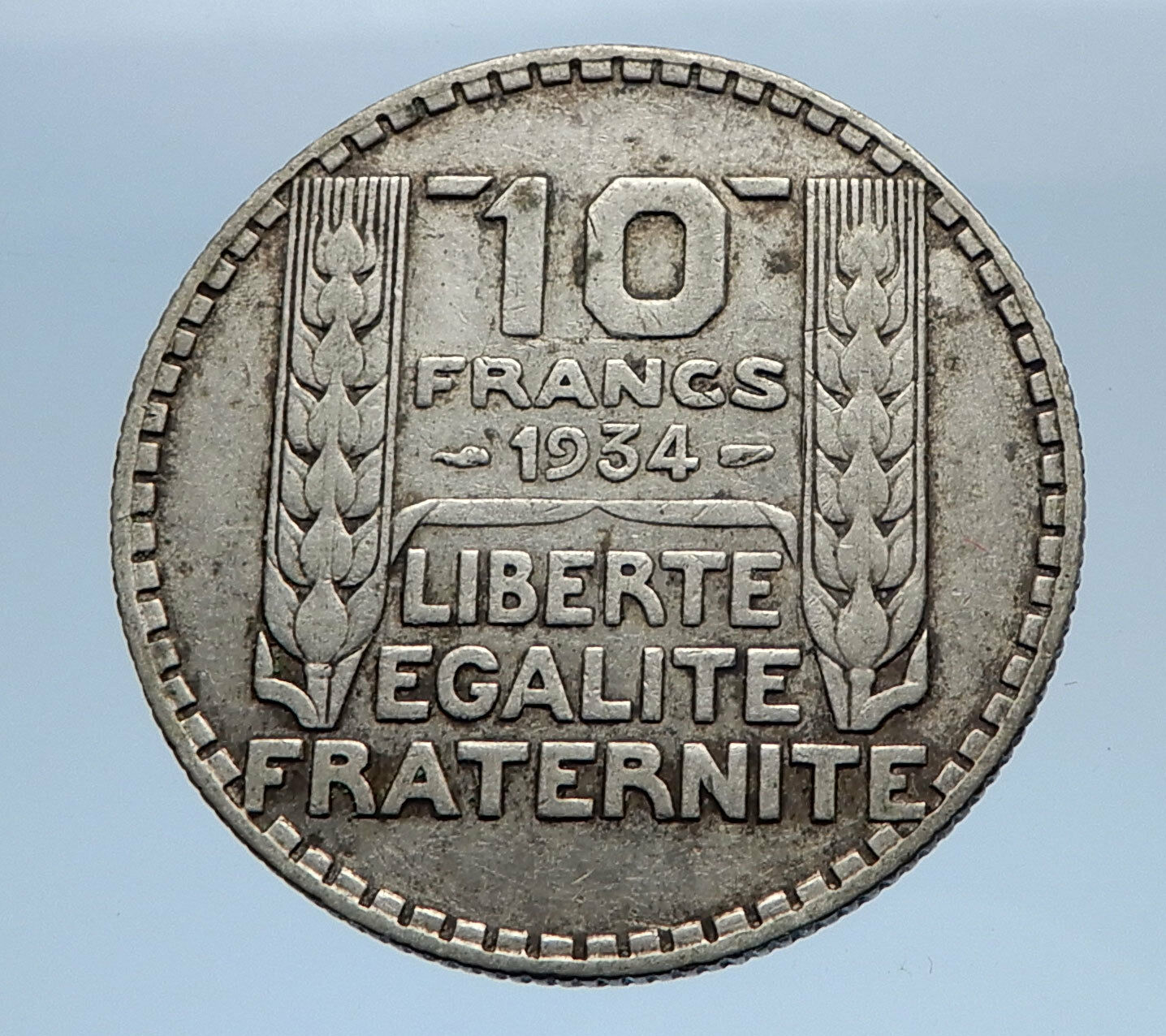|
France. Limoges.
Abbey of Saint Martin
Silver Denier 19mm (0.80 grams) struck circa 1100-1245 A.D.
Reference: Montlebeau Hoard
Certification: NGC AUTHENTIC 5872716-166
Man facing.
Square cross.
You are bidding on the exact item pictured, provided with a Certificate of Authenticity and Lifetime Guarantee of Authenticity.
The Abbey of St Martial (French: Abbaye Saint-Martial, Limoges; Limousin: Abadiá de Sent Marçau de Limòtges) was a monastery in Limoges, France, founded in 848 and dissolved in 1791.
The buildings were razed at the beginning of the 19th century. The only remaining part is the 10th-century crypt, which was rediscovered in 1960, and which contains the tomb of Saint Martial, the first bishop of Limoges, and also that of Saint Valerie of Limoges, another, possibly legendary, early martyr.
The origins of the abbey lie in the graveyard outside the original Roman settlement of Augustoritum. This is the site of the Place de la République, at the commercial heart of modern Limoges. The cemetery was the reputed burial place of early Christian martyrs, including Saint Martial, the first bishop of Limoges. This evolved into a place of pilgrimage in Merovingian times. By the 6th century, according to Gregory of Tours, there was a funerary chapel above Saint Martial’s tomb, in the care of a small community of clerics, who were recognised as a congregation of canons in the reign of the Carolingian ruler, Louis the Pious (814-840). This community became a Benedictine abbey in 848, under Charles the Bald. A mosaic above the tomb of Saint Martial dates from approximately this time, and is set in hard cement from an earlier period, indicating that the shrine was already well-established and of some antiquity by the time the abbey was founded. History
The abbey grew in importance and elaboration, alongside the “City of the Castle”. This was a major commercial centre, under the patronage of the abbot, and outside the boundaries and control of the Cathedral City, dominated by the bishop. The body of Saint Martial was, at some time in the late 9th century, taken from its sarcophagus and placed for a time in a golden shrine in the great new church which was built over the spot. Here it was a magnet for pilgrims on the Way of St. James, benefiting from the wider pilgrim traffic throughout Western Europe.
The abbey reached the peak of its importance in the century following its take-over by Cluny Abbey in 1065, when it was famed for its literature and music. However, the shrine was stolen by Henry II of England, who was also the Duke of Aquitaine. Turmoil in the land was interpreted as the saint’s response to the disturbance of his bones. The body was reburied and an altar placed above it.
The disturbances of the 12th century were followed by a period of rebuilding and a century of renewed prosperity. However, they had been only a foretaste of the destruction and disruption of the Hundred Years’ War. The Limousin was not spared in the dynastic and religious conflicts of the 16th and 17th centuries. The abbey went through a protracted decline and it never recovered the greatness of its heyday.
There was considerable rebuilding and repair in the early 18th century. However, in 1791, during the French Revolution, the abbey community was dissolved, and in the following year the sacking and demolition of the building began. By 1807 this was complete. The area was levelled and turned into a new public space, the Place de la République. Portions of the relics of the martyrs, allegedly saved by faithful Catholic citizens of Limoges, were rehoused in the nearby church of St. Michel des Lions. The twin Castle and Cathedral cities were at last unified into a single municipality under secular governance.
Excavations were carried out from 1960, on the initiative of the city council, in the hope of uncovering the remains of the abbey and the shrine of Saint Martial. By 1962, the crypt containing the tombs of Saints Martial and Valerie had been rediscovered. Excavations were then pushed further to the east, revealing more church buildings belonging to the abbey. From 1966, the crypt with the surrounding area was consolidated and opened to the public, the whole being covered with a large concrete slab. Today, it is entered down a flight of steps from the Place de la République above. Admission is free.
Excavations started again in July 2015 to carry out detailed studies of the remains before revamping of the Place de la Republique.
 Limoges is a city and commune, the capital of the Haute-Vienne department and was the administrative capital of the former Limousin region in west-central France. Limoges is known for its medieval and Renaissance enamels (Limoges enamels) on copper, for its 19th-century porcelain (Limoges porcelain) and for its oak barrels which are used for Cognac and Bordeaux production. Some are even exported to wineries in California. Limoges is a city and commune, the capital of the Haute-Vienne department and was the administrative capital of the former Limousin region in west-central France. Limoges is known for its medieval and Renaissance enamels (Limoges enamels) on copper, for its 19th-century porcelain (Limoges porcelain) and for its oak barrels which are used for Cognac and Bordeaux production. Some are even exported to wineries in California.
Ancient and medieval history
Scarce remains of pre-urban settlements have been found in the area of Limoges. The capital of the Gaulish people of the Lemovices, who lived in the area, was probably either near Villejoubert, some kilometres south-east of Saint-Léonard-de-Noblat, or St Gence, just west of Limoges.
The city proper was founded as Augustoritum by the Romans, around 10 BC: “rito-” is Gaulish for “ford”. The foundation was part of the reorganization of the province by the emperor Augustus, hence the new name. The Roman city included an amphitheatre measuring 136 x 115 metres, a theatre, a forum, baths and several sanctuaries. According to tradition, a temple consecrated to Venus, Diana, Minerva and Jupiter was located near the modern cathedral. The city was on the typical Roman square plan, with two main streets crossing in the centre. It had a Senate and a currency of its own, a sign of its importance in the imperial age. Later, like many towns and cities in Gaul, it was renamed after the tribe (here the Lemovices) whose chief town it was; “Lemovices” subsequently evolved into “Limoges”, and “Lemovicinus” for the area around changed into “Limousin”.
Limoges was evangelized by Saint Martial, who came to the city around 250 with two companions, Alpinianus and Austriclinienus. However, in the late 3rd century it was increasingly abandoned, due to unsafe conditions created by the invasions of various Germanic tribes. The population was concentrated instead in a more easily fortifiable site, the modern Puy Saint-Étienne, which is the centre of the modern Limoges. Starting from the construction of the Abbey of St. Martial (9th century), another settlement grew around the tomb of the saint, while a third area, next to the residence of the viscount (the future Castle of Saint Martial), seems to have been populated from the 10th century.
Starting from the 11th century, thanks to the presence of the Abbey of St. Martial and its large library, Limoges became a flourishing artistic centre. It was home to an important school of medieval music composition, which is usually called the St. Martial School; its most famous member was the 13th-century troubadour Bertran de Born.
In the 13th century, at the peak of its splendour, central Limoges consisted of two fortified settlements.
- The town proper, with a new line of walls encompassing the Vienne River, inhabited mainly by clerks and workers. It has a bridge on the Vienne river named after Saint-Étienne, built by the bishops, and a developed port. Sacked in 1370, it never recovered entirely.
- The castle, with 12 meter-high walls, including the abbey and controlled by the abbot, sometimes in contrast with the bishop-ruled town (“la Cité”). Traces of the walls can still be seen in the city centre. Outside the lines of walls were the popular quarters.
In 1370, Limoges was occupied by Edward, the Black Prince, who massacred some 300 residents, “perhaps a sixth of the normal population”, with another 60 members of the garrison of 140 dead as well.
Modern history
The city and castle were united in 1792 to form the single city of Limoges. During the French Revolution several religious edifices, considered symbols of the Ancien Régime, were destroyed by the population: these included the Abbey of St. Martial itself.
Some years later the porcelain industry started to develop, favoured by the presence of kaolinite which was discovered near Limoges in 1768 (near St Yrieix, south-west of Limoges). Many of the inhabitants became employed in the new sector or in connected activities (including the lumbering of wood needed for firing the porcelain) in manufacture and exporting needed for European distribution of Limoges Boxes, dinnerware, and other porcelain wares. Because the Limousin region has had a long history of breeding (Baronet sheep and Limousine cows), the leather industry also settled in and around Limoges along the banks of the Vienne-the river providing the necessary water and power. Factories in Limoges and St Junien still produce luxury leather shoes, gloves, and bags.
In the 19th century Limoges saw strong construction activity, which included the destruction and rebuilding of much of the city centre. The unsafe conditions of the poorer population is highlighted by the outbreak of several riots, including that of July-November 1830; April 1848. In early 1905 strikes began in another local industry, shoe factories soon followed in the porcelain factories. Barricades were built, the army intervened. There would be two casualties: a horse and a young porcelain worker, Camille Vardelle. The first French confederation of workers, Confédération Générale du Travail (CGT) (General Confederation of Labour), was created in Limoges in 1895.
During the World War II, many Jews from Alsace were evacuated to and around Limoges.
  France, officially the French Republic (French: République française), is a sovereign state comprising territory in western Europe and several overseas regions and territories. The European part of France, called Metropolitan France, extends from the Mediterranean Sea to the English Channel and the North Sea, and from the Rhine to the Atlantic Ocean. France spans 640,679 square kilometres (247,368 sq mi) and has a total population of 67 million. It is a unitary semi-presidential republic with the capital in Paris, the country’s largest city and main cultural and commercial centre. The Constitution of France establishes the state as secular and democratic, with its sovereignty derived from the people. France, officially the French Republic (French: République française), is a sovereign state comprising territory in western Europe and several overseas regions and territories. The European part of France, called Metropolitan France, extends from the Mediterranean Sea to the English Channel and the North Sea, and from the Rhine to the Atlantic Ocean. France spans 640,679 square kilometres (247,368 sq mi) and has a total population of 67 million. It is a unitary semi-presidential republic with the capital in Paris, the country’s largest city and main cultural and commercial centre. The Constitution of France establishes the state as secular and democratic, with its sovereignty derived from the people.
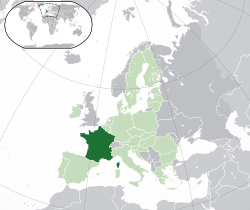
During the Iron Age, what is now Metropolitan France was inhabited by the Gauls, a Celtic people. The Gauls were conquered in 51 BC by the Roman Empire, which held Gaul until 486. The Gallo-Romans faced raids and migration from the Germanic Franks, who dominated the region for hundreds of years, eventually creating the medieval Kingdom of France. France emerged as a major European power in the Late Middle Ages, with its victory in the Hundred Years’ War (1337 to 1453) strengthening French state-building and paving the way for a future centralized absolute monarchy. During the Renaissance, France experienced a vast cultural development and established the beginning of a global colonial empire. The 16th century was dominated by religious civil wars between Catholics and Protestants (Huguenots).
France became Europe’s dominant cultural, political, and military power under Louis XIV. French philosophers played a key role in the Age of Enlightenment during the 18th century. In 1778, France became the first and the main ally of the new United States in the American Revolutionary War. In the late 18th century, the absolute monarchy was overthrown in the French Revolution. Among its legacies was the Declaration of the Rights of Man and of the Citizen, one of the earliest documents on human rights, which expresses the nation’s ideals to this day. France became one of modern history’s earliest republics until Napoleon took power and launched the First French Empire in 1804. Fighting against a complex set of coalitions during the Napoleonic Wars, he dominated European affairs for over a decade and had a long-lasting impact on Western culture. Following the collapse of the Empire, France endured a tumultuous succession of governments: the monarchy was restored, it was replaced in 1830 by a constitutional monarchy, then briefly by a Second Republic, and then by a Second Empire, until a more lasting French Third Republic was established in 1870. By the 1905 law, France adopted a strict form of secularism, called laïcité, which has become an important federative principle in the modern French society.
France reached its territorial height during the 19th and early 20th centuries, when it ultimately possessed the second-largest colonial empire in the world. In World War I, France was one of the main winners as part of the Triple Entente alliance fighting against the Central Powers. France was also one of the Allied Powers in World War II, but came under occupation by the Axis Powers in 1940. Following liberation in 1944, a Fourth Republic was established and later dissolved in the course of the Algerian War. The Fifth Republic, led by Charles de Gaulle, was formed in 1958 and remains to this day. Following World War II, most of the empire became decolonized.
Throughout its long history, France has been a leading global center of culture, making significant contributions to art, science, and philosophy. It hosts Europe’s third-largest number of cultural UNESCO World Heritage Sites (after Italy and Spain) and receives around 83 million foreign tourists annually, the most of any country in the world. France remains a great power with significant cultural, economic, military, and political influence. It is a developed country with the world’s sixth-largest economy by nominal GDP and eight-largest by purchasing power parity. According to Credit Suisse, France is the fourth wealthiest nation in the world in terms of aggregate household wealth. It also possesses the world’s second-largest exclusive economic zone (EEZ), covering 11,035,000 square kilometres (4,261,000 sq mi).
French citizens enjoy a high standard of living, and the country performs well in international rankings of education, health care, life expectancy, civil liberties, and human development. France is a founding member of the United Nations, where it serves as one of the five permanent members of the UN Security Council. It is a member of the Group of 7, North Atlantic Treaty Organization (NATO), Organisation for Economic Co-operation and Development (OECD), the World Trade Organization (WTO), and La Francophonie. France is a founding and leading member state of the European Union (EU).
|









 Limoges is a city and commune, the capital of the Haute-Vienne department and was the administrative capital of the former Limousin region in west-central France. Limoges is known for its medieval and Renaissance enamels (Limoges enamels) on copper, for its 19th-century porcelain (Limoges porcelain) and for its oak barrels which are used for Cognac and Bordeaux production. Some are even exported to wineries in California.
Limoges is a city and commune, the capital of the Haute-Vienne department and was the administrative capital of the former Limousin region in west-central France. Limoges is known for its medieval and Renaissance enamels (Limoges enamels) on copper, for its 19th-century porcelain (Limoges porcelain) and for its oak barrels which are used for Cognac and Bordeaux production. Some are even exported to wineries in California. 
 France, officially the French Republic (French: République française), is a sovereign state comprising territory in western Europe and several overseas regions and territories. The European part of France, called Metropolitan France, extends from the Mediterranean Sea to the English Channel and the North Sea, and from the Rhine to the Atlantic Ocean. France spans 640,679 square kilometres (247,368 sq mi) and has a total population of 67 million. It is a unitary semi-presidential republic with the capital in Paris, the country’s largest city and main cultural and commercial centre. The Constitution of France establishes the state as secular and democratic, with its sovereignty derived from the people.
France, officially the French Republic (French: République française), is a sovereign state comprising territory in western Europe and several overseas regions and territories. The European part of France, called Metropolitan France, extends from the Mediterranean Sea to the English Channel and the North Sea, and from the Rhine to the Atlantic Ocean. France spans 640,679 square kilometres (247,368 sq mi) and has a total population of 67 million. It is a unitary semi-presidential republic with the capital in Paris, the country’s largest city and main cultural and commercial centre. The Constitution of France establishes the state as secular and democratic, with its sovereignty derived from the people.


